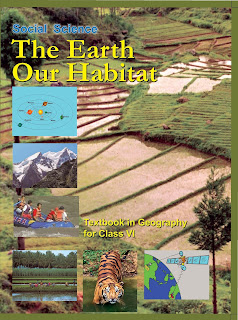NCERT CLASS 6 GEOGRAPHY
CHAPTER- 2 [GLOBE: LATITUDES AND LONGITUDES]
- Earth is slightly flattened at the north and the south poles and bulge in the middle.
- Globe is a true model of the earth.
- Earth rotates from west to east.
- Equator is an imaginary line that divides the earth into two equal parts
- The northern half of the earth is Northern Hemisphere.
- The southern half of the earth is Southern Hemisphere.
- All parallel circles from the equator up to the poles are called parallel of latitudes. Latitudes are measured in degrees.
- Equator represents the zero degrees latitude.
- 90degree north latitude marks the North Pole and 90degree south latitude marks the South Pole.
- Distance from the equator to either of the poles is one-fourth of a circle round the earth, 1/4th of 360, i.e, 90degree.
- All parallels north of the equator are called ‘north latitudes’.
- All parallels south of the equator are called ‘south latitudes’.
- Four important parallels of latitudes-
- By measuring the angle of the Pole Star from your place, you can know the latitude of your place.
- All latitudes in between the Tropic of Cancer and the Tropic of Capricorn receives the maximum heat and is called the Torrid Zone.
- The areas bounded by the Tropic of Cancer and the Artic circle in the northern hemisphere and the Tropic of Capricorn and the Antartic Circle in the Southern Hemisphere have moderate temperature, therefore called Temperate Zones.
- Areas lying between the artic circle and the North Pole in the northern hemisphere and the antartic circle and the South Pole in the Southern Hemisphere are very cold, therefore called Frigid Zone.
- Line of reference running from the North Pole to the South Pole are called the Meridians of longitude.
= the distance between them are measured in ‘ degrees of longitude’.
- Longitudes are semi- circles and the distance between them decreases steadily polewards until it becomes zero at the poles where all the meridians meet.
- All meridians are of equal length.
- Meridians which pass through the Greenwich, where the British Royal Observatory is located, is called the Prime Meridian.
= value is 0° longitude and from it we count 180° eastward as well as 180° westward.
- The Prime Meridian and 180° meridian divide the earth into two equal halves, the Eastern Hemisphere and the Western Hemisphere.
- When the Prime Meridian of Greenwich has the sun at the highest point in the sky, all the places along this meridian will have mid-day or noon.
- As the earth rotates from west to east, those places east of Greenwich will be ahead of Greenwich time and those to the west will be behind it.
- The earth rotates about 15° an hour.
- The Earth has been divided into 24 time zones of one hour each. Each zone thus covers 15° of longitude.
